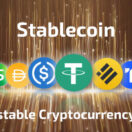Holo is a decentralized hosting platform that allows anyone to access distributed applications by simply typing a URL into their web browser. Its developers want to empower individuals and help build thriving communities by allowing everyone to explore the distributed internet.
A centralized internet makes us more vulnerable to censorship, tracking, hacking, and numerous other abuses. Holo wants to empower all internet users by replacing corporate servers with our own computers. By using Holo, you’ll be able to rent out your computer resources just like you would rent out a spare room on Airbnb.
How Holo Works
Holo is built on top of Holochain, a decentralized computing platform that is much faster, more scalable, far more energy efficient, and significantly cheaper than a conventional blockchain because it maintains data integrity without using resource-intensive consensus algorithms.
Holochain will enable users to own their data, manage their identity, keep automatic backups, customize their user experience, decide with whom to share their private information, and transact without dealing with third parties.
Despite all these benefits, installing and experimenting with Holochain may prove to be too complicated for mainstream Internet users, which is why its developers are launching Holo to function as the bridge that links Holochain to everyday users.
Holo enables users to use their web browser and existing payment systems to interact with Holochain’s decentralized apps and currencies. It basically bridges Holochain’s fully distributed world of the future to the semi-centralized world of today.
Participants on the Holo Platform
There are three main participants on the Holo platform:
1. End Users – End users can use Holo to access distributed apps using standard web browsers. They don’t need to install Holochain because Holo is specifically designed to help them reach distributed apps, make safe and easy crypto transactions, and keep their data out of centralized services. End users may need to buy credits from Holo to use applications that require credits.
2. Hosts – Hosts are essentially network nodes. They set their own prices for hosting and can even opt to host certain applications (Wikipedia, etc.) for free. Hosts can set filters by app categories, usage demands, and price brackets. They earn credits for their services and can redeem them from Holo once they have a sufficient number of hosting records.
3. Application Providers – App providers are responsible for the maintenance and security of apps they publish on Holochain. They are required to pay credits to hosts when they receive proof-of-service invoices. Unpaid invoices are visible to all participants on the network, making it easy for hosts to refuse to serve unscrupulous app providers.
About Holochain and How it Works
Holochain is a next-gen blockchain system that bypasses the cumbersome process of public verification of blocks by using a distributed hash table (DHT) to process node agreements and a crypto-accounting system based on traditional double-entry bookkeeping to handle transactions.
Instead of managing global consensus using one universal ledger, every node has a unique signed hash chain which is countersigned for transactions involving other parties. Data that’s signed to local chains is synced to a DHT where every node on the network adheres to the same validation rules.
Blockchains are great for systems that must maintain global consensus, but most potential use cases for the technology don’t require that type of strict consensus. Holochain functions better than a conventional blockchain because it can provide integrity without consensus, making it:
Faster – Holochain apps run much faster than apps on conventional blockchains because they don’t need to sync every small change with all network participants.
More Efficient – Holochain is significantly more efficient and affordable than conventional blockchains because there is no global syncing or mining. Holochain is so efficient, a host can run multiple full nodes on a cell phone or Raspberry Pi computer with no problems.
Scalable – Holochain can potentially support apps with billions of simultaneous users because of its parallel architecture.
Adaptable – Users can use Holochain to create adaptable apps and protocols that meet their needs. Holochain will provide developers with RAD (Rapid Application Development) tools to quickly build distributed web apps that can operate on the scale of Facebook or Twitter with no centralized data centers or infrastructure.
Extensible – Users can easily link applications to other applications. Anything a user can read out of one app, they can write into another.
Prototype Applications
Holochain was released in alpha in Q1 2018. Current prototype applications include:
Clutter – a distributed Twitter clone.
Fractal Wiki – a serverless wiki of cards within cards.
HoloChat – a multi-channel chat room for teams that’s similar to Slack.
DPKI – a decentralized cryptographic key management tool.
Holochain vs. Other Blockchains
Holochain differs from a conventional blockchain in terms of scalability, energy intensiveness, volume, and efficiency. Rather than thinking of Holochain like a blockchain, it’s better to think of it like a git repository for each node that can be published, synchronized, merged, or shared via a BitTorrent-like DHT. Here’s a breakdown of the things it improves:
Hash-Chain Approach – Holochain allows its nodes to act independently instead of sharing a single universal ledger across all nodes. Its nodes independently share evolving data realities that come to agreement over time.
Energy Use – Holocahin doesn’t require any mining, which means specialized processors are not needed and it is possible for full nodes to run on cell phones or low-power computers. For comparison, Bitcoin consumes more than 0.1% of the world’s electricity to power less than 0.0001% of the world’s money.
Transaction Volume – Holochain is expected to surpass financial exchange backbones like Visa, which can currently process up to 56,000 transactions per second.
Scalability – With a sharded DHT, the transaction load per node gets lighter as the network grows.
Consensus Effects – No mining or staking and no consensus. Holochain is not vulnerable to majority attacks. You only have to trust the code on your own node and you can validate a counterparty’s history directly.
Holo Fuel
Holo incentivizes hosts to provide processing power and storage space for distributed applications by rewarding them with the platform’s token, Holo Fuel.
Holo Fuel is designed to efficiently handle a high volume of transactions by enabling double-entry accounting with layers of cryptographic assurance. Both parties in a transaction sign the transaction to each other’s account chains, which is then validated by peers on a shared distributed hash table. Every credit has an offsetting debit. Nobody ever creates something from nothing, and there is no mining, minting, or burning of coins.
Holo Fuel is not token in the conventional sense; it’s more of a mutual credit accounting system where every transaction is countersigned on the local chains of both parties. It’s optimized to function as a medium of exchange rather than a store of value currency. Rather than using a proof-of-work or proof-of-stake consensus, users are awarded Holo Fuel when they provide a valuable service, such as sharing bandwidth, processing power, and storage space. The Holo team calls this process “proof-of-service.”
How Holo Fuel is Used
You earn Holo Fuel by sharing computing power with other users, which means the most critical component in the value stability of Holo fuel is the computing power of Holochain’s hosts. Holo Fuel is priced in computing units and can be used to:
Spend – Holo Fuel can be used as payment on apps and online marketplaces just like any currency.
Redeem – Hosts can redeem the Holo Fuel they earn and exchange it for other cryptocurrencies or fiat currencies.
Borrow – trusted hosts with a good track record will be able borrow Holo to pay for things.
Payment Flow
Here’s how a common payment flow would work on Holo:
An app provider buys hosting by purchasing credits from Holo. Their means of payment (USD, ETH, BTC, etc.) is held in a reserve account.
A host generates signed service logs as they respond to queries from users accessing the app through their web browsers.
The host submits a proof-of-service invoice to the app provider when they accumulate enough service logs.
The app provider pays the host in hosting credits after validating the proof-of-service invoice.
The host can cash out their hosting credits from the reserve account where the original payment was made.
HOT Trading Volume, Pricing and Market Cap
HoloToken (HOT) is an ERC20 token that acts as a surrogate for Holo Fuel. HOT is what was sold during the Holo ICO that ended on April 28, 2018. The number of HOT issued was linked to the funds raised during the ICO.
The Holo team announced that they would add 33.3% more HOT to whatever was minted during the ICO. 133,214,575,156 HOT tokens were minted during the ICO, so an additional 33% was added to the supply, bringing the total supply to 177,619,433,541 HOT. 25% of the supply will be held by the Holo organization and team, and the remaining 75% will be held by the community.
HOT joined the market strong in May 2018. Its price reached an all-time high of ~$0.001990 USD with a market cap of $234 million USD during that month. Its value dipped in the months that followed, but will likely pick up steam once the Holo network goes live.
Buying, Storing and Selling HOT
The largest exchange that currently offers HOT trading is Binance. Other exchanges that have HOT listed include Fatbtc, Hotbit, LATOKEN, and IDEX.
HOT is an ERC20 token which means it can be stored in any Ethereum wallet that supports the ERC20 standard. The best storage options include MyEtherWallet, Parity, Mist, Exodus, Jaxx, and MetaMask. Hardware wallets like the Ledger Nano S and Trezor will also work.
Liquidity of HOT
HOT has good market liquidity. The project’s scope is ambitious, but if successful, it could free us all from the current Internet’s centralized platforms and services. Interest will likely pick up once the Holo network is finally launched. This is a project worth keeping an eye on.






